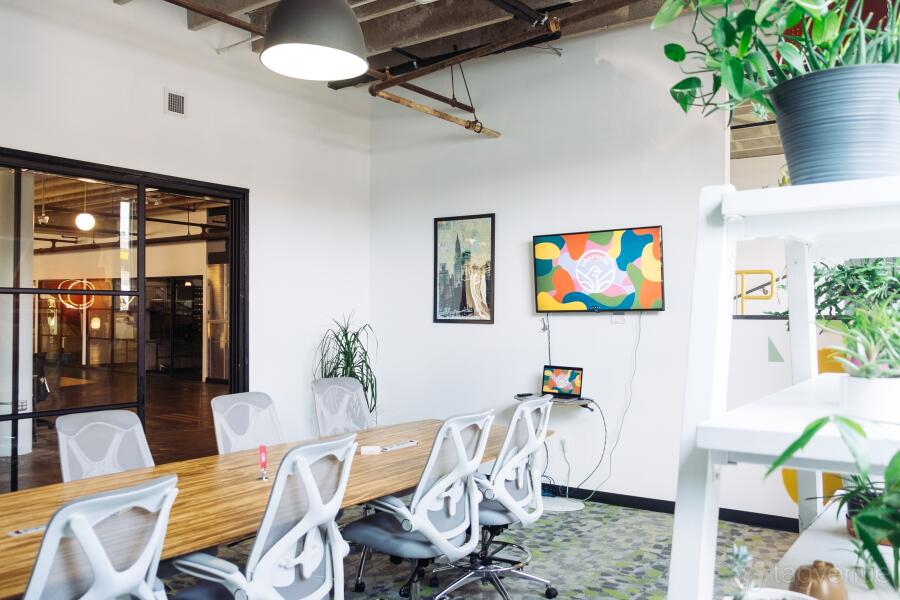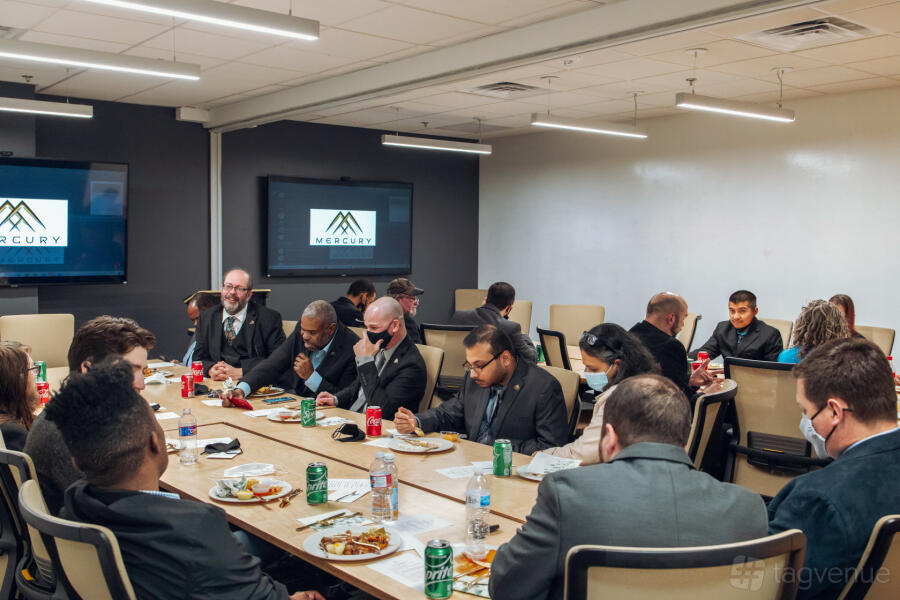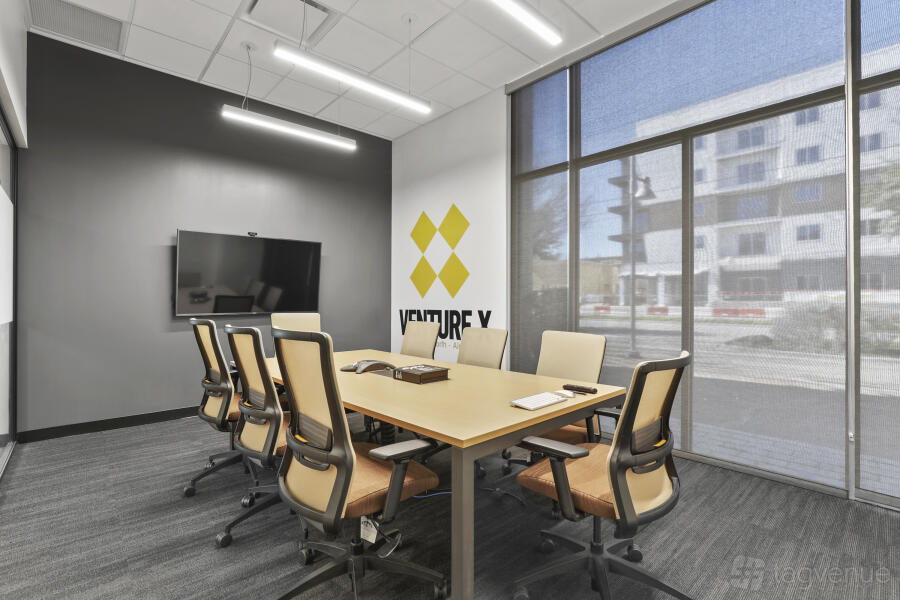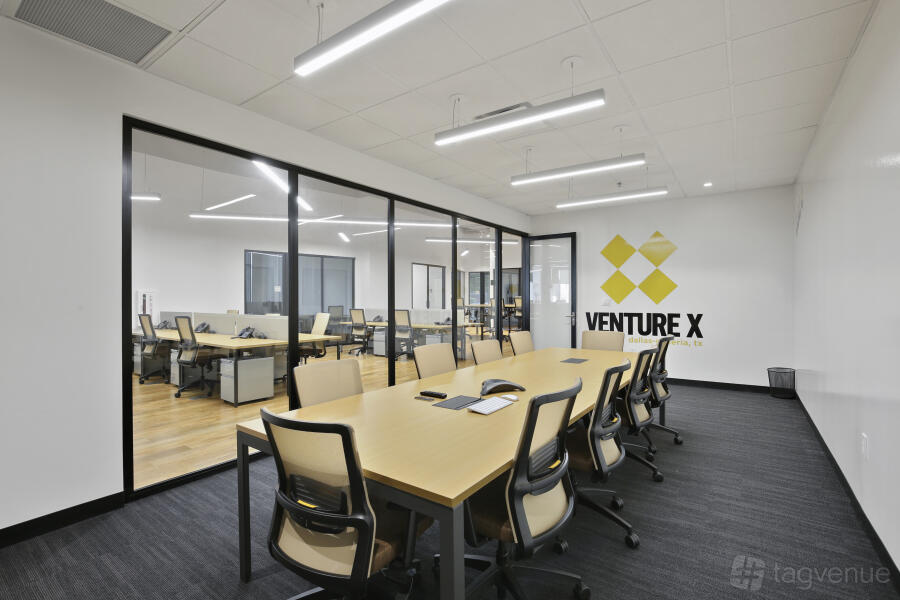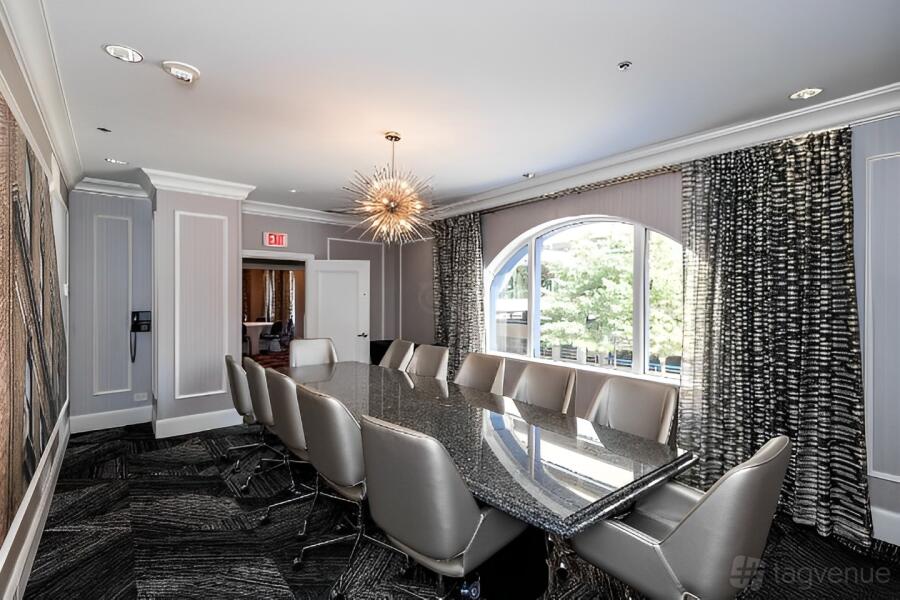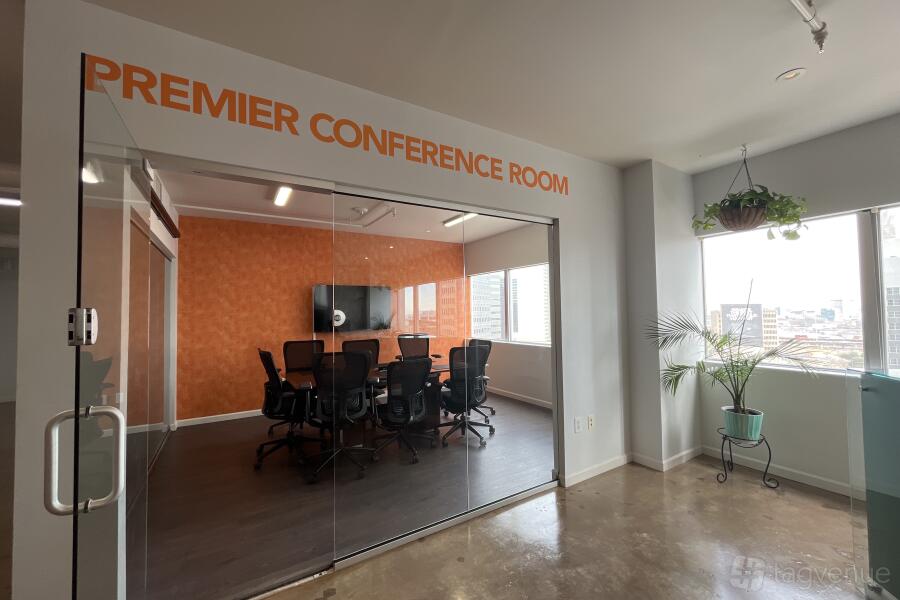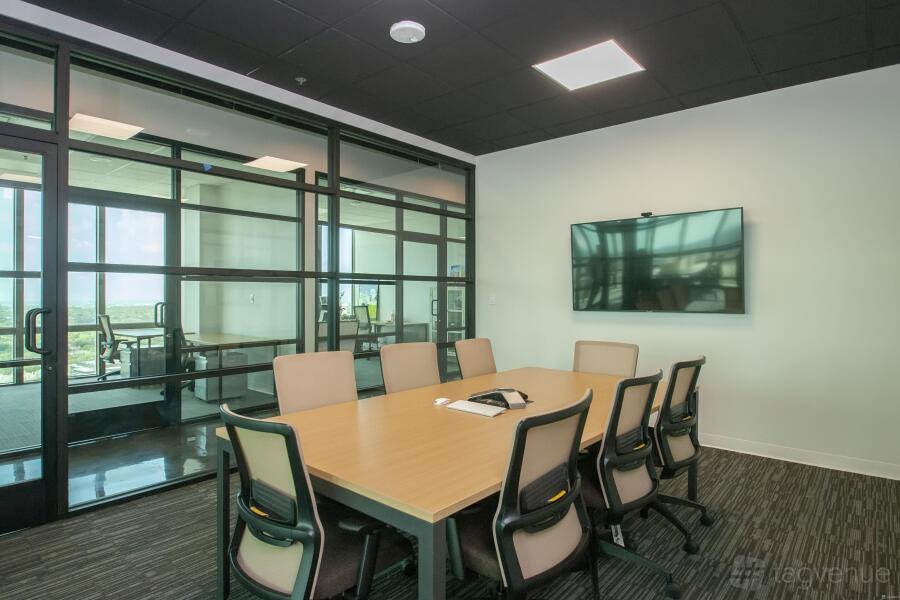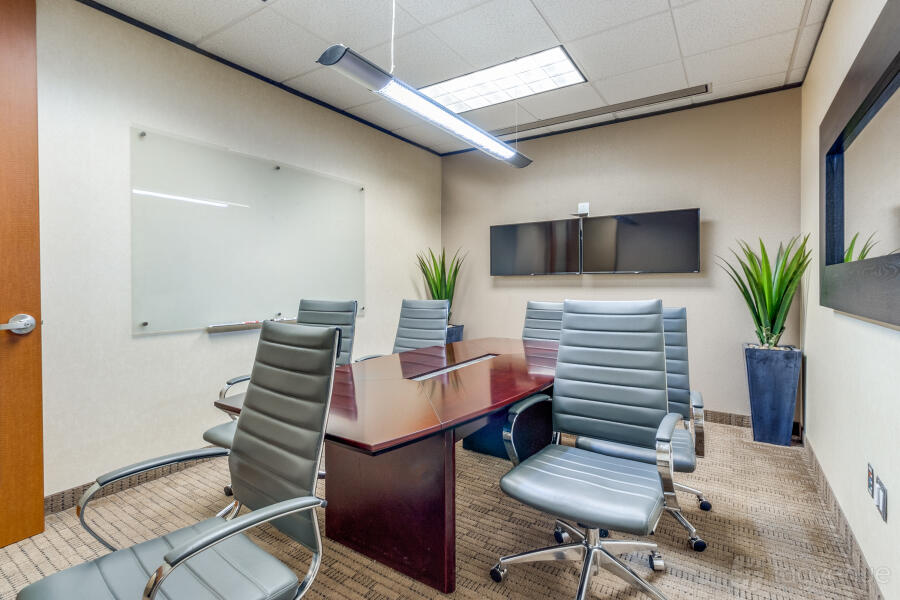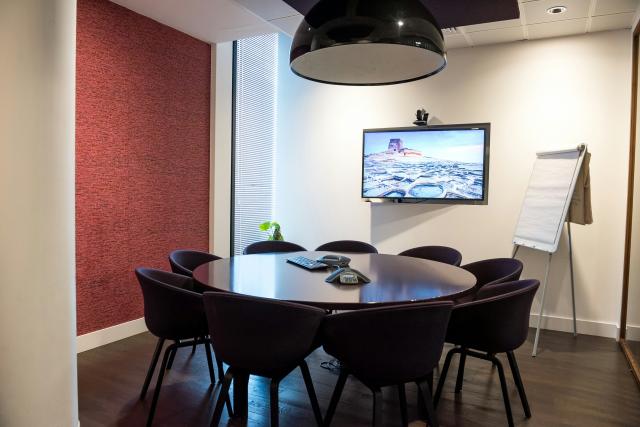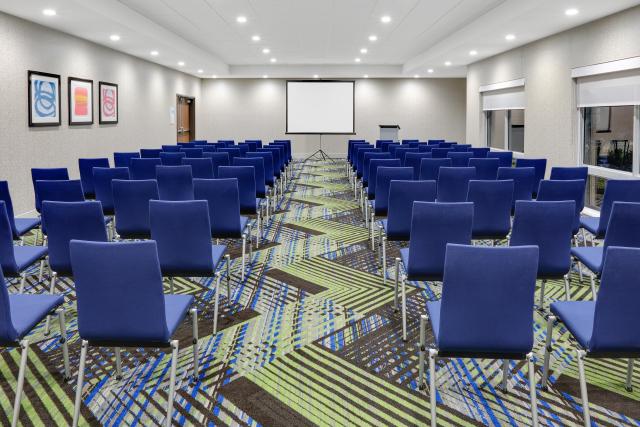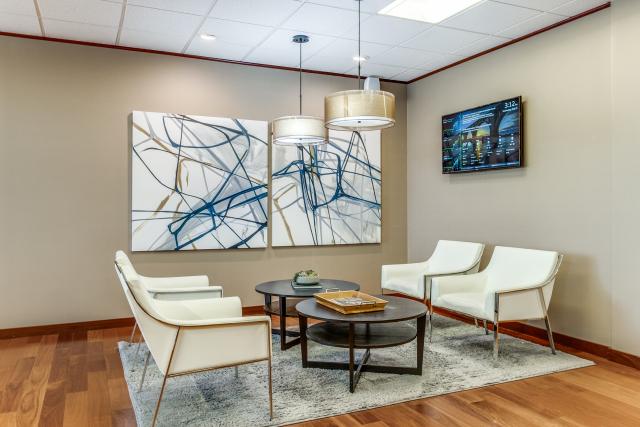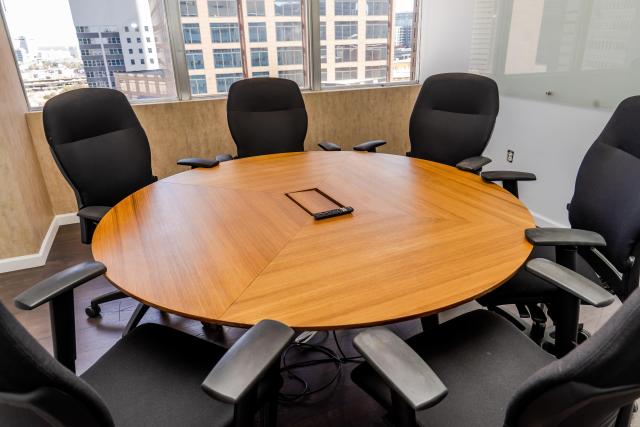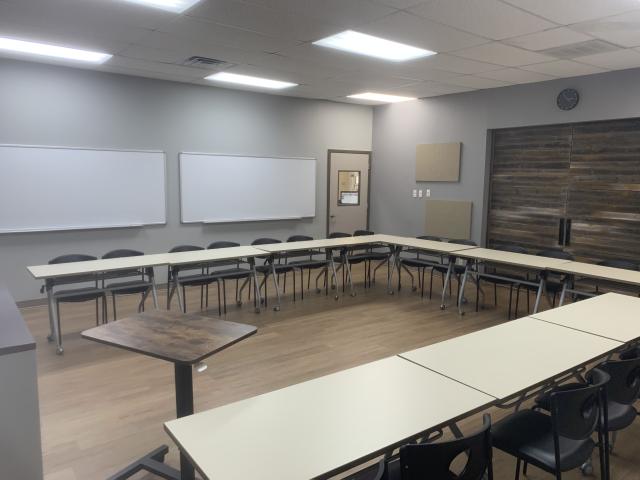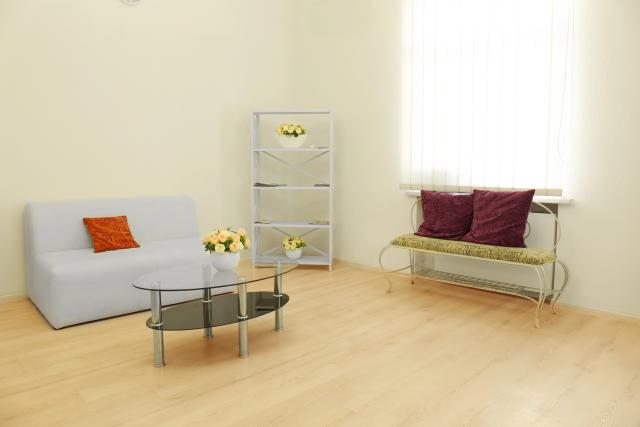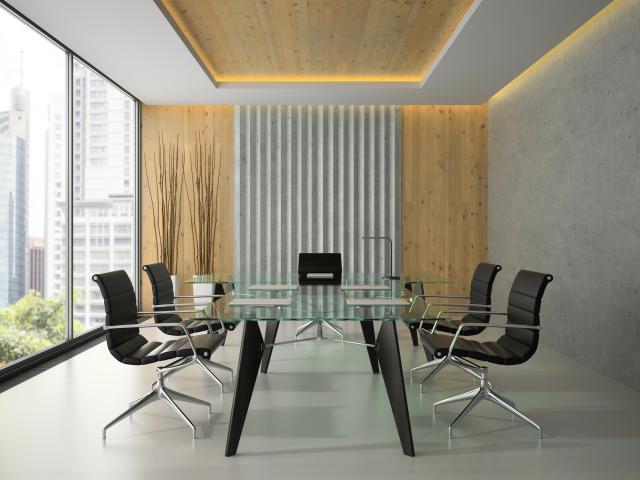Top Meeting Spaces in Dallas, TX
Discussing internal affairs or showcasing your entrepreneurial skills to Tim Cook? The meeting spaces of D-Town have you covered. Classic meeting rooms, creative spaces, and conference halls can be found in any neighborhood, from the cultural center known as the Bishop Arts District to Preston Hollow, an upscale neighborhood in Dallas. From low-key creative spaces to banquet-style meeting rooms, there's something for everyone in the city. Whether you need a convention facility for your seminar with top-notch appetizers or minimalist rooms with state-of-the-art equipment for that presentation, Tagvenue has them all.
-
The Collins Boardroom
10 guestsLucid Private Offices - Dallas Galleria TowerNorth Dallas, TX#Supervenue
CChris L.
“Venue was great. Perfect for our meeting”from $75
hire fee / per hour -
The Garden City Room
10 guestsGood CoworkingDallas, TXJJovita M.
“This space was so easy to book. Front staff was great and professional. A great place to meet and work.”from $60
hire fee / per hour -
Smaller Meeting Room
45 guestsHilton Garden InnNortheast Dallas, TX#Supervenue
Experience intimate productivity in our thoughtfully designed small meeting space at Hilton Garden Inn. Ideal for focused discussions and brainstorming sessions, this cozy enclave offers modern amenities and a comfortablefrom $550
hire fee / per day -
Large Conference Room
10 guestsPremier Workspaces - Two Turtle CreekOak Lawn, Dallas, TXThe Large Conference Room is designed to accommodate up to 10 people. This spacious room is perfect for meetings, brainstorming sessions, and more. With amenities like High Speed Internet, a Professional Address, an Equippedfrom $75
hire fee / per hour -
Modern 40Person Training Room
35 guestsVenture X | Dallas by the GalleriaNorth Dallas, TXVenture X offers beautifully designed modern workspaces. You'll enjoy coworking, private offices, meeting rooms, and virtual offices with full concierge service and endless amenities.from $163
hire fee / per hour -
Medium Person Conference Room
8 guestsVenture X | Dallas by the GalleriaNorth Dallas, TXThis medium 8-person conference room is fully equipped with the latest technology and amenities to make your meeting or event successful. The space includes a TV for presentations, video and phone conferencing capabilities,from $60
hire fee / per hour -
Large 12Person Conference Room
12 guestsVenture X | Dallas by the GalleriaNorth Dallas, TXThis conference room is perfect for startups, corporate companies, presentations, client meetings, and interviews.from $71
hire fee / per hour -
Meetings
12 guestsHotel Indigo Dallas DowntownArts District, Dallas, TXOur Historic Conrad Boardroom will be perfectly suitable for the next emergency meeting with your team or a normal gathering to talk business. There is comfortable seating for each of the team members.from $650
hire fee / per day -
Premier Conference Room
8 guestsConnected CoworkingDowntown Dallas, TXOur Premier Conference Room is perfect for your next group or board meeting. The sleek environment features views of downtown that are sure to inspire your group's next big idea.from $50
hire fee / per hour -
The Welch Conference Room
6 guestsLucid Private Offices - LBJ FreewayNorthwest Dallas, TXWelcome to The Welch Conference Room, a distinguished meeting space within Lucid Private Offices on LBJ Freeway. This room, located in the heart of Dallas, combines style and functionality, ideal for both creative brainstormingfrom $65
hire fee / per hour -
Medium Meeting Room
8 guestsFlex at The GildDallas, TXThe Medium Meeting Room at Flex at The Gild accommodates up to eight people, offering a comfortable space for mid-sized team meetings, brainstorming sessions, or client presentations.from $60
hire fee / per hour -
The Deming Conference Room
6 guestsLucid Private Offices - Dallas Galleria TowerNorth Dallas, TX#Supervenue
This private and serene environment is ideal for both formal business meetings and creative brainstorming sessions, making it a versatile choice for professional gatherings.from $65
hire fee / per hour
- 1
- 2
- 3
- ...
- 5
Capacity
Budget
Area type
Venue type
Catering and drinks
Accessibility features
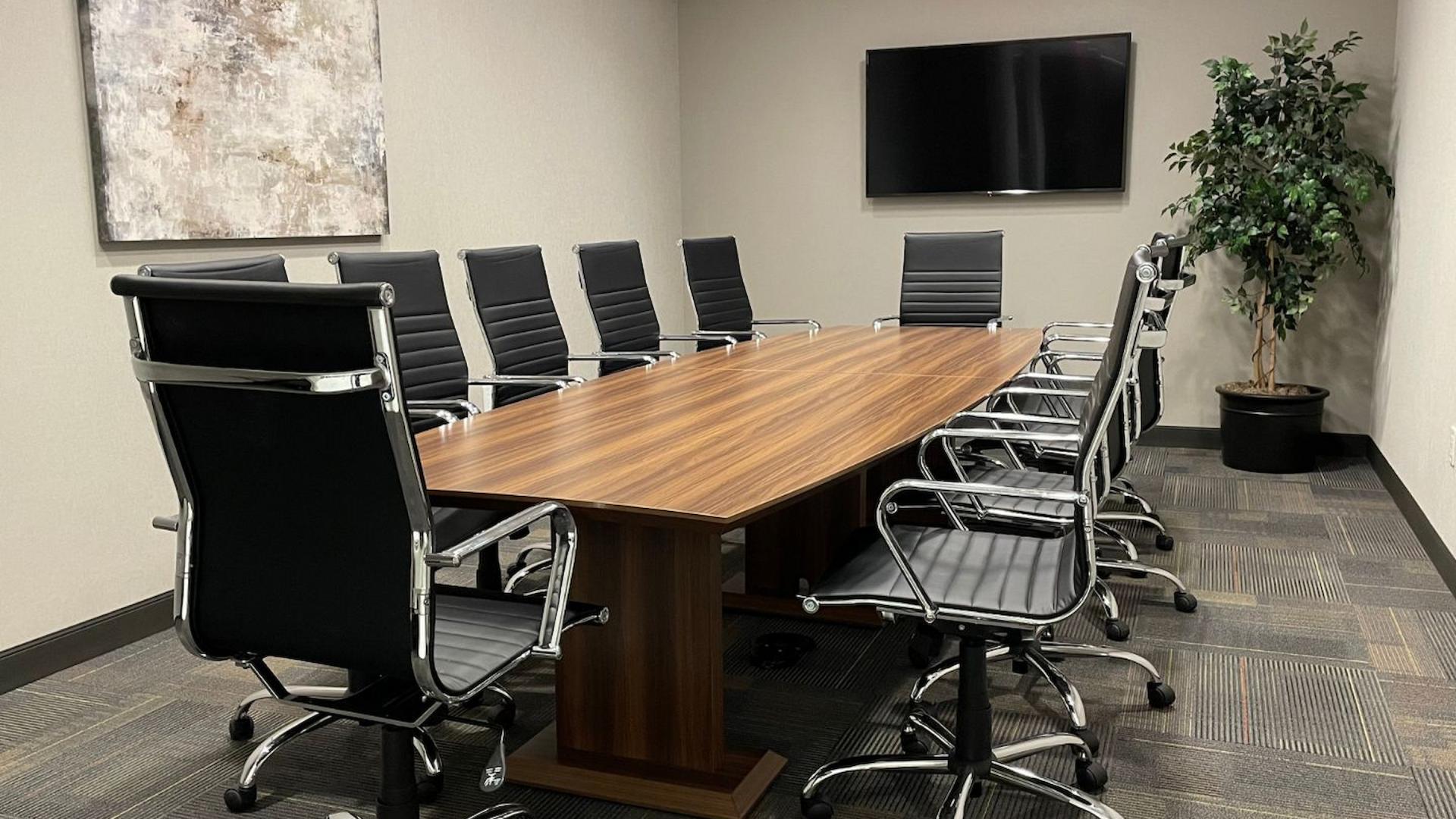
FAQs about Top Meeting Spaces in Dallas, TX
Trying to impress your guest? Book a venue in prime locations like Deep Ellum, where your guests can enjoy public parks like the Fair Park and find accommodation at the Sheraton Hotel. Remember to rent spots with the business traveler in mind-make sure that the meeting rooms are in close proximity to airports, hotels, and restaurants. Downtown Dallas has something for everyone, whether it’s the shopping or fine dining options. This place is perfect for entertaining your guests after a meeting. The Bishop Arts District is a favorite location for anyone who wants to experience the Dallasite nightlife and culture. Whether it’s the Bishops Arts Theatre Center or Kessler Theater, your guests will fall in love with their unique live shows and musical productions!
While most meeting spaces are equipped with furniture such as chairs and tables, you may also find other additional equipment on rent or for free, such as whiteboards, flip charts, projectors, and AV screens. It’s important to let the venue know in advance so that they can arrange for everything prior to the meeting.
Yes! We recommend booking at the earliest to ensure the space is available for your meeting needs. Moreover, when you book in advance, it’s easier to plan the agenda, arrange any catering or refreshments, and even customize the layout of the room according to your event requirements.
You can find different styles of meeting rooms in Dallas. Boardrooms are probably the most popular type of meeting space with a large oval or rectangular table that you find typically see in many sitcoms and movies. They are mostly used for discussing important matters. These can accommodate around 25 people. If you’re hosting a talk or an award ceremony, choose a banquet-style meeting room where you can easily connect with other people-great for some networking. If you’re meeting with a bunch of creatives to discuss some new project and wish to keep it low-key, you can rent a co-working space or creative room for your meeting. It’s affordable and less formal than the other types of meeting rooms. Among other meeting spaces in Dallas, you’ll find small or large conference rooms, functional rooms, classroom-style meeting rooms, and more relaxed meeting spaces with couches or no chairs (perfect for brainstorming sessions). Most of these spaces offer state-of-the-art technology, high-speed internet, and on-site support teams. Just make sure to confirm everything with the venue manager before making a reservation!
Renting a meeting space in Dallas costs around $20 per hour for a budget-friendly venue. If you’re looking for premium options, budget around $60 onwards. Remember that meeting rooms are bookable by the hour or day. The price will vary depending on the amenities provided and the location of the meeting room. (All data according to Tagvenue.)
Your Guide to Renting Meeting Spaces in Dallas, TX
You’re probably thinking, "Who cares about the venue?" It's the content of the meeting or the delivery of the speech that matters! We wish you were right. However, your business partners or team members care about how you make them feel and trust us, that has a lot to do with the venue and service offered. Maybe Zuckerberg will sign that deal after tasting the exquisite sushi served on the spot, or maybe your staff won’t ask for that raise a little off time in Dallas. It’s always a good idea to include some activities for your team if you’re hosting a meeting in a new place, and the same goes for new business partners. When selecting a venue, consider some entertainment options, such as restaurants, eclectic bars, nightclubs, and landmarks.
Have some CEOs over for a meeting? Hire a meeting space near the Ritz Carlton or Rosewood Mansion where your guests can find the best accommodation in the city! With remote work becoming popular, many businesses don’t need actual office space, so it’s crucial to stand out as a company when holding an official meeting or a seminar! You need to flaunt those assets (obviously, we’re talking about the company) and seize every opportunity! Whether you’re delivering a presentation or discussing project details, renting a venue for laying down roots is crucial. At the same time, not renting out a fixed space for a long duration gives you more flexibility and freedom for every upcoming business affair! It can be pretty dull to hold a meeting at the same spot for five straight years. So think of narrowing down your options and keeping it classy! But how do you go about planning a successful meeting? We’ve come up with some recommendations for your next meeting.
How to select the appropriate room for your meeting
When you’re faced with such decisions for your company’s future, you'd better have a good idea of what space should be on your list. Meeting rooms are designed to serve versatile purposes, ranging from important collaborations to brainstorming sessions. When choosing a space, think of all the elements that are likely to contribute to the event’s success, such as on-site support, hiring options, audio/visual equipment such as LCD monitors, projectors, Wi-Fi, the seating arrangement, and the overall atmosphere of the meeting space itself.
The amenities and location of the venue are also crucial to the comfort of your attendees. Don’t underestimate the effect of canapes and velvet chairs; the right venue can really enhance the way your attendees feel and how they respond in general. They say when one door closes, another one opens. This goes true for meeting spaces in Dallas, where you can find affordable meeting rooms starting at $20 per hour. If something more luxurious is your desire, check out some of the high quality conference rooms at five-star hotels.
How can I make sure that my meeting goes meeting smoothly?
Flexibility
Pick venues that provide flexibility, that is, spaces that allow you to change the seating arrangement, move the furniture, or switch some elements of the set-up. Check that the venue allows you to rent the spot for extra hours in case the meeting needs to be extended. Other things to consider include on-site catering or catering arrangements, as well as accommodation facilities, if any.
Meeting space capacity
The last thing your guests want is to be crammed together in a room without air-conditioning in August. Once you know what’s on the agenda, note down the number of people and search for venues that can easily accommodate your guests. Planning a tête-à-tête with a CEO? You might want to consider prestigious meeting rooms in areas like Lake Highlands or Prestige Hollow. If you're hosting a training session and expect more than 100 attendees, consider larger meeting rooms or conference halls for the event. Organizing paid events such as trainings or seminars, you can always host these at creative spaces or board rooms.
Catering options
Appetizers are always a good idea. Don’t let your guests' tummies growl during the meeting and offer some food and beverages on the schedule. Set a break during lunchtime or simply offer a light lunch after the meeting. Many venues offer this add-on, which makes it easier for you to host a 2 in 1 event. You won’t even need to take everyone to a fancy restaurant afterward. If the meeting room doesn’t allow catering, make sure to pick a venue that’s close to reputable restaurants. You’ll find many options in places like Bishop Arts, Deep Ellum, Greenville, and Trinity Groves, among others. But for the love of success, don’t leave your guests hungry!
Amenities
Factors like outlets for your guests to plug their laptops into, WI-fi, and parking facilities are some of the must-haves for any modern meeting space. Some may even have audio/video facilities in place. Parking is critical if your guests are traveling by car. In this case, you should avoid renting a venue in the city center, where people will have to park their cars miles away from the event location. It’s always a good idea to ask the venue manager to arrange for ample parking space for your guests if possible! Always look for add-ons when planning your event in a meeting room.
Venue checklist: done! Now let’s talk about the real thing: how do you plan that meeting? Maybe you need a plan, or maybe you're an outstanding improviser? It’s not always easy to have all eyes on you, so it’s better to be prepared for the event. Whether it’s the meeting’s purpose, the presentation, the invitations, the agenda, or the schedule, it’s always best to have a plan!
How to plan a meeting
The ideal way to plan a successful meeting is to start with a purpose and end your meeting with follow-up questions. If you’re a Ted Talk habitué, you won’t need much preparation, but for the rest of us who don’t have much experience in holding meetings or want to upgrade our meeting skills, we’ll need more than just pep talk to grab our audience’s attention! So without further ado, let’s dive into some concrete steps!
Start with a goal
Hiring a venue with some delicious food is an amazing way to reward your staff. However, there's more to a meeting's success than just food! If you’re planning several meeting days in a row or a seminar, you should come up with a goal. It’s important to identify the purpose of the meeting before even renting the venue or inviting your guests. Whether you wish to solve a problem, make a decision, share information, or design an action plan, you need to have a set goal. Meetings are only worth it when you have something significant to cover. If that piece of information can be sent via email, there’s no need for a meeting. So think twice before picking a meeting date and leave the most important stuff for those first-class meeting spaces. Once you’ve decided on the purpose of the meeting, develop an agenda that covers all the key topics of the event. Think of including an introduction to the problem or a statement if it’s a seminar or talk, followed by the content of the meeting and the issues you wish to address.
Send the invites with an agenda
Once you’ve defined the purpose and critical points of the meeting, select key employees or partners who are likely to impact these issues. For instance, including those who can help you achieve your goals and those who are directly affected by the meeting held. When sending out the invitations, think of the people who have substantial knowledge of the matter you want to address. Next, consider the size of your meeting. If you’re planning to solve a problem, it’s not a wise decision to invite many people, as the process might get convoluted; in such cases, it’s best to restrict your meeting size. However, if you’re trying to brainstorm ideas for a new project, you can increase the number of guests to foster a richer discussion. Just bear in mind to invite the people you truly need to the meeting and save the larger number of guests for paid events like seminars or workshops. Once you’ve made up your mind, send out the invitations along with the agenda so that everyone knows the purpose of the meeting. Consider sending emails for the invitation and using a calendar invitation so that nobody forgets the big event and makes a point of being there! Haven’t heard from your participants? Get in touch with them to confirm their attendance, particularly if they have an important role in the meeting.
Start the meeting on time
Got the agenda distributed and the venue rented. And then comes the meeting day. You can distribute the agenda to everyone to remind them of the schedule. Start the meeting on time, unless it’s a one-on-one meeting and you’re still waiting for Elon Musk! Starting on time keeps everyone focused and alert; it’s also the safest way to end on time and not rush through the content of the meeting.
How to conduct a meeting effectively
Terrified of holding your first meeting? You don’t have to be! Stay hydrated, take pauses when you need to think, and keep these tips in mind.
Introduce yourself
Start by setting the tone, as it helps the attendees be more comfortable and come up with new ideas regarding the issue. It’s essential to introduce yourself if you are meeting new people. It goes without saying that it's always a good idea to greet the people in the room and thank them for coming, particularly if they flew miles just for this!
Define the goal of the meeting
As we mentioned earlier, there’s no meeting without a purpose. So use the first few minutes to introduce the purpose of the meeting to your key speakers and participants. By doing so, you’re also giving the attendees time to think of possible solutions to the problem. You can summarize the agenda so that everyone knows what to expect if they haven’t had time to check it.
Use humor and icebreakers
Hosting a seminar or training session? Use humor or icebreakers to lighten the atmosphere, especially if you’re working with a bunch of newbies. It presents a positive image of your company. Unless you’re dealing with some serious stuff where humor is not permissible, always inject levity during the meeting. It is great for creating a more relaxed environment.
Keep up with your schedule
If you don’t need to improvise or come up with some solid arguments right on the spot, it’s best to stick with your agenda as it ensures that you’re covering all the points and following the time allotments for all discussion topics. Remember to let everyone have a copy of the agenda at the start of the meeting, so they can catch up even if they show up late.
End with a conclusion
Once you’ve discussed all the important elements of the meeting and come up with a solution or come to an agreement, it’s crucial to highlight the purpose of the meeting, the issues covered, and the conclusion reached. You can always send an email to all the participants as a means to remind them of the accomplishments of the meeting. For instance, if it’s a training session, it’s necessary to follow up with some key elements of the training and possibly some additional material for the attendees; this is a fantastic means to put your company in the limelight without being too obvious.
Lastly, finish with some appetizers and drinks, or treat your guests to a full-course dinner after the meeting! Nothing seals the deal quite like a scrumptious meal! To make things better, plan a city tour for your attendees if they’re new to Dallas, or simply hire a venue where you can host a dinner party after the meeting!

